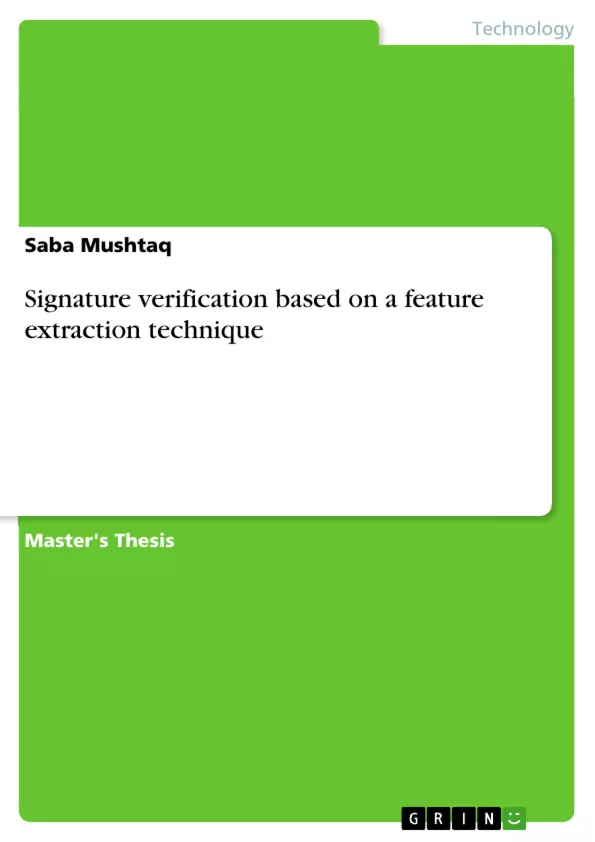In this research we evaluate the use of GLRLM features in offline handwritten signature verification. For each known writer we take a sample of fifteen genuine signatures and extract their GLRLM descriptors. We also used some forged signatures to test the efficiency of our system.
We calculate the simple statistical measures and also inter- and intra-class Euclidean distances (measure of variability within the same author) among GLRLM descriptors of the known signatures. The key points Euclidean distances, the image distances and the intra class thresholds are stored as templates.
We evaluate use of various intra-class distance thresholds like the mean, standard deviation and range. For each signature claimed to be of the known writers, we extract its GLRLM descriptors and calculate the inter-class distances, that is the Euclidean distances between each of its GLRLM descriptors and those of the known template and image distances between the test signature and members of the genuine sample. The intra-class threshold is compared to the inter-class threshold for the claimed signature to be considered a forgery. A database of 525 genuine signatures and 30 forged signatures consisting of a training set and a test set are used.
Inhaltsverzeichnis (Table of Contents)
- Chapter 1
- Introduction
- Problem Motivation
- Biometrics Introduction
- Past
- Present
- Future
- Personal Biometric Criteria
- Biometric System-Level Criteria
- Performance parameters
- Thesis outline
- CHAPTER 2
- Introduction
- Pattern recognition
- Feature extraction
- Handwritten signatures
- On-line and off-line signatures
Zielsetzung und Themenschwerpunkte (Objectives and Key Themes)
The objective of this research is to evaluate the efficacy of using GLRLM features in offline handwritten signature verification. The study aims to develop a system that can reliably distinguish between genuine and forged signatures using a combination of statistical measures, Euclidean distances, and intra-class thresholds.
- GLRLM feature extraction for offline signature verification
- Evaluation of statistical measures and Euclidean distances
- Development of intra-class thresholds for forgery detection
- Performance analysis using a database of genuine and forged signatures
- Exploration of various intra-class distance thresholds
Zusammenfassung der Kapitel (Chapter Summaries)
Chapter 1: Introduction provides an overview of the research topic, focusing on the motivation behind studying offline handwritten signature verification. It introduces biometrics, discussing its past, present, and future, and delves into personal and system-level criteria for biometric systems. The chapter concludes with a detailed outline of the thesis.
Chapter 2: Introduction to Signature Verification explores the field of pattern recognition and feature extraction in the context of handwritten signature verification. It distinguishes between online and offline signatures, providing a foundation for understanding the specific challenges and techniques involved in offline signature analysis.
Schlüsselwörter (Keywords)
The key terms and concepts central to this research include offline handwritten signature verification, GLRLM features, Euclidean distances, intra-class thresholds, forgery detection, statistical measures, biometric systems, pattern recognition, and feature extraction.
- Quote paper
- Saba Mushtaq (Author), 2012, Signature verification based on a feature extraction technique, Munich, GRIN Verlag, https://www.grin.com/document/376136



